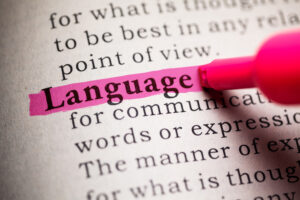When Hurricane Katrina battered the Gulf Coast and devastated New Orleans in 2005, many wondered what would become of the fabled city and its French-and-African fused culture. Katrina was among the strongest hurricanes ever to hit the United States, killing almost 2,000 people, displacing more than 800,000, and causing over eighty billion dollars of property damage. Almost a decade later, the city continues to recover, with tourism on the rise and new artists and hipsters attracted to the idea of rebuilding a city. But the aftermath of the storm’s legacy on debates in medical ethics is just now being fully understood.
Five Days at Memorial is Pulitzer Prize winner Sheri Fink’s magisterial account of the harrowing post-storm triage efforts at Memorial Medical Center in Uptown New Orleans. Fink’s new work has already won the National Book Critics Circle Award and the Ridenhour Book Prize, but, perhaps most importantly, it will forever serve as a record of the acts of a few select nurses and doctors who took it upon themselves to euthanize multiple patients and have since managed to escape prosecution—rendering a permanent insult to our standards of medical ethics and our understanding of the proper uses of health care, even in times of crisis.
Following the storm, the official count of the dead at Memorial was forty-five persons—“the largest number of bodies found at any Katrina-struck hospital or nursing home,” writes Fink. In the weeks and months after the storm, news analysts, medical experts, and, eventually, criminal investigators began trying to make sense of the unusually high death toll at Memorial. Thanks to Fink, that story is now being told.
Surviving the Storm
For local New Orleanians, Memorial Medical Center will always be known as just “Baptist”—a reference to its origins as a Southern Baptist hospital that opened in 1926 with a threefold mission: the alleviation of pain, the prolongation of life, and the relief of suffering. The physical structure of Memorial was known as a fortress that could weather any storm, and many of the local nurses and doctors had a tradition of coming to the hospital—often bringing their family members along with them—when large storms loomed. Katrina was no different. Due to the severe predictions, Memorial played host to 187 patients, approximately 600 medical personnel, about 500 family members, and a range of pets that the family members brought with them. And when New Orleans Mayor Ray Nagin issued an unprecedented mandatory evacuation of the city on Sunday, August 28, 2005, an exception was made for major hospitals.
Start your day with Public Discourse
Sign up and get our daily essays sent straight to your inbox.At the center of Fink’s account is Dr. Anna Marie Pou, a well-regarded head and neck surgeon who had a reputation for her fierce and protective treatment of her patients, even if she was occasionally known to be a loose cannon. An expert in cancer rehabilitation surgeries, she was known for her stamina and her ability to successfully complete grueling reconstruction operations. In 2004, she joined the faculty of Louisiana State University’s medical school and received an appointment at Memorial Medical Center. She was on duty at the time of Katrina and gladly complied with the expectation that she would ride out the storm at the hospital.
When Katrina made landfall, the immediate impact of the storm was not as grave as many had predicted. “We dodged a bullet,” seemed to be the general consensus among the staff at Memorial. Such sentiments, however, proved premature. When the levees protecting the city broke and the flooding began, the hospital and the entire city went into crisis mode.
Two things were essential for the proper functioning of the hospital: clean water and electricity. Patients on dialysis needed a clean water supply, but initial testing revealed the water to be contaminated. Electricity was essential to continue treatment for the premature babies and elderly patients on respirators and ventilators, but the generators providing backup power failed. And even the patients who didn’t rely on any of these machines still needed proper means of cooling and hydration, which were unavailable without air conditioning and a large clean water supply.
Both chaos and heroism defined the scenes at Memorial for the next three days. Despite the failure of federal, state, and local authorities and the negligible efforts of the hospital’s owners to support the medical personnel on the ground, impressive makeshift evacuations were organized and executed, through both ground and air rescue operations. For the most part, the members of the Memorial staff worked around the clock with few provisions to sustain them. Neonatal ICU nurses loaded up babies—some of whom were on life support—in small bassinets, and all sixteen of the critically ill newborns were provided safe passage out of the hospital, along with many elderly patients who desperately needed oxygen or other operations.
But even as adrenaline and courage fueled these rescue operations, morale at the hospital declined. Failed plumbing, human decay, sweat, and tears marked the conditions inside. Outside the hospital, the streets of New Orleans rang with gunshots, and martial law was imposed on the city. Those inside the hospital feared that they might be the next victims of looters forcing their way into the hospital as they desperately sought food, water, drugs, or other means of survival. From Fink’s account, it is quite evident that those inside legitimately feared that they might not ever make it out of the hospital alive.
On day four—Wednesday, August 31—the first signs of real hope emerged as boats arrived to begin the massive transport operation for those remaining. At the same time, discussions began to take place among medical personnel about what should be done with patients whom they deemed unable to be transported by either boat or air. By day five, the situation appeared more desperate. Rescue was under way, but conditions continued to deteriorate. After one of the doctors made the decision to euthanize some of the animals on hand, Dr. Susan Mulderick, a colleague of Dr. Pou, thought that this seemed to be the most merciful way to treat some of the remaining patients as well. Mulderick sought out Pou, and a plan was formed.
Many of Memorial’s remaining patients were already on morphine to ease their pain. In a consultation with Dr. Ewing Cook, another member of the hospital’s staff, Pou was advised by Cook on how to administer a mix of morphine and benzodiazepine. As Fink recounts, “He later said that he believed that Pou understood that he was telling her how to help the patients ‘go to sleep and die.’” This use of morphine, unlike the patients’ current treatment, was not just for comfort. “What Cook was describing to Pou was something else entirely. The drug combination ‘cuts down your respiration so you gradually stop breathing and go out.’”
Senior hospital officials had rejected previous mentions of euthanasia, but in the back rooms and corridors of Memorial, some doctors advocated it. Others made it clear that they would never carry out such actions. “What was surprising,” writes Fink, “was that the alleged plan was put into action not when the staff was desperately awaiting rescue, but rather when the evacuation was at last under way.”
Fink vividly describes scenes of protest—with some nurses crying, even wailing, and immediately leaving the hospital, appalled by the actions of their fellow medical personnel. By the end of day five, Memorial Medical Center was fully evacuated of its living patients and staff.
Euphemisms and the End-of-Life Care Debates
After months of investigation, the state Attorney General’s office believed at least eighteen deaths at Memorial to be suspicious. In July of 2006, Pou and two other nurses were arrested, though the investigation and publicity surrounding the case centered on Pou. Her employer hired one of the best criminal defense attorneys in town to represent her and even employed the services of a public relations firm. Fink describes the relentless PR campaign that ensued, which painted Pou as a compassionate doctor acting in the best interest of her patients during a time of extreme crisis. When the case finally reached the grand jury in July 2007, the jurors refused to indict Pou on even a single count.
Much of the debate that took place centered around one question: Did some members of the medical staff at Memorial commit murder, or were they simply trying to alleviate pain, with the deaths of some patients being merely unintended outcomes? Here, we wade into the classic debate of double effect, where intentionality is key to discerning whether foul play is involved. From the testimonials and accounts provided, it seems quite clear that Pou sought to administer lethal doses of medication at levels nine times the amount that standard care would have required.
Perhaps what is most telling, as Fink reminds us, is that these actions took place when rescue of these patients seemed possible and even probable. An honest evaluation of the facts leads to the obvious conclusion that the driving motivation for Pou and her colleagues was to expedite their own evacuation; in so doing, they were valuing their own self-interest and survival over that of the patients under their care.
Pou’s defense team threatened that, if Pou were charged, a massive revolt would occur among medical personnel, who would refuse to continue to work in the New Orleans area. Regrettably, this type of pressure and fear-mongering dominated much of the coverage of the events at Memorial, and little public discourse was devoted to whether these individuals acted in accord with the principles that are intrinsic to and inseparable from the practice of medicine.
The actions of this event and similar debates over euthanasia are cloaked in the language of mercy, kindness, compassion, and even love. This represents a fundamental perversion of the practice of medicine, which cannot be severed from its necessarily life-affirming purpose. The Hippocratic Oath binds doctors to do no harm and not to kill. What happened in New Orleans in 2005—and whenever medical professionals intentionally aid in the dying process—is an assault to the integrity of their field.
Patients—many of whom are in the most vulnerable moments of their life and are often voiceless and defenseless—rely on the expertise and fidelity of physicians who act to restore their health, or at least alleviate their suffering. Any other type of action is not only inconsistent with physicians’ professional responsibilities, but is also a violation of the trust between patient and physician. This trust is the necessary foundation for a proper standard of medical care. Medical ability must always be directed toward the preservation of life, never against it.
Five Days at Memorial is an example not only of journalism at its finest, but also, in many respects, of humanity. The efforts of the majority of the doctors and nurses to protect human life in the most extreme and frightening of circumstances exemplify the unparalleled commitment to care and compassion that is essential to the practice of medicine. The betrayal of this commitment is surely the gravest crime of all.












